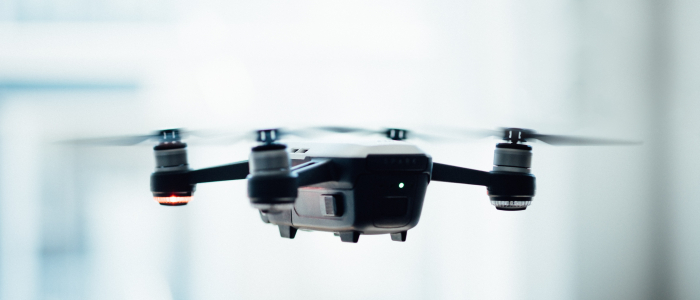
The action plan unveiled by the Federal Ministry of Transport and Digital Infrastructure in May 2020 entitled “Unmanned Aircraft Systems and Innovative Aviation Strategies” outlines the key aspects of the future regulation of drones, air taxis etc.
Economic significance
The global market for UAS-based services (Unmanned Aircraft System, UAS) is worth an estimated USD 127 billion annually. The German commercial market for drones grew by 21 percent in the first six months of 2020 compared to the same period the previous year. According to the European Parliament, civil drone technology could make up for approximately 10 percent of the EU’s aviation market in the next ten years.
The federal government wants Germany to become a lead market for the development of new innovative UAS technology while establishing high safety standards. It plans to increase commercial UAS applications from currently 2 percent to 8 percent of overall use in 2030, while preserving current protection levels for personal data, privacy and the environment.
The political and legal tailwind could create interesting opportunities for the industry as a whole, as well as for logistics service providers, freight forwarders and investors. The government sees considerable potential for UAS-based services in particular in transportation, surveying, media production, security and law enforcement, civil protection in the event of emergencies or natural disasters, agriculture, the energy supply industry, distribution logistics as well as the provision of goods and services to rural or remote, difficult-to-access areas.
Current legal framework
In Germany, the operation of UAS is regulated under the Civil Aviation Act (Luftverkehrsgesetz) and the country’s air traffic regulations. Operators require a licence to fly drones above a specific weight, at night or over certain areas. UAS with a take-off mass of more than 0.25 kg require markings, and those exceeding 2 kg require a so-called certificate of knowledge (“UAS driving licence”). National rules for UAS are set to be increasingly replaced by EU rules: A new EU regulation specifically aimed at UAS is scheduled to take effect in early 2021; further updated drafts can be expected in the near future.
The federal government’s plans
The action plan contains measures for digitalizing and simplifying the licensing process in order to create an innovation-friendly environment. The federal government plans to expand existing state-run research funding programmes, support the establishment of national and cross-border test beds and real-world laboratories, and establish a coordinating body for UAS test beds.
Systematic, quantitative registration of UAS and the use of UAS detection systems at airports are designed to ensure aviation security. Additionally, a traffic management system is to be created for unmanned aircraft. To this end the federal government is planning the development of a central digital platform to facilitate connectivity and data exchange. What’s more, mandatory electronic conspicuity of UAS is intended to ensure automated collision avoidance. 5G mobile communication technology is considered to be particularly suited to this; further frequencies are being assessed for use in the regulation of commercial and state UAS operations.
The action plan also defines noise limits that must be complied with for UAS to be granted a CE marking. It also sets stringent requirements for their operation over noise-sensitive areas. The plan provides for the (ad-hoc) creation of UAS no-fly zones, which can be automatically identified by UAS with the help of a mandatory geo-awareness functionality.
According to the federal government’s assessment, air taxis represent a viable new mode of transport for the near future. The EASA has already published regulatory framework for air taxis, which may allow them to become operational within the next three years. They could be used to create better connections between transport hubs such as airports and train stations, reduce congestion on the ground and transport emergency physicians in air rescue operations.
Classification
Many of the details of future rules still have to be hammered out, and there are indications that they will give rise to complex questions concerning interpretation in numerous legal areas – including when it comes to national and European regulations. However, it is already evident that the federal government is charting an interesting course in unmanned aviation, and that further developments will have to be keenly watched.
